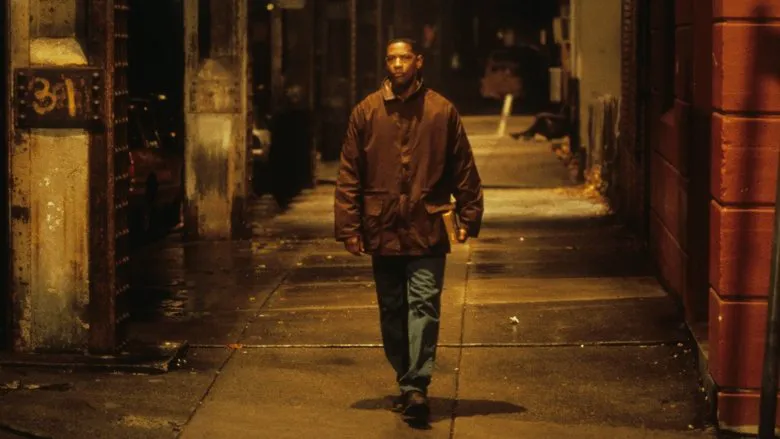A Descent into Darkness: Exploring Loneliness and Depravity in Fallen Angels
Wong Kar-wai’s Fallen Angels, visually stunning through Christopher Doyle’s cinematography, plunges into the lives of five interconnected yet isolated individuals navigating the grim underbelly of Hong Kong. The film pulsates with an unspoken web of affection, a twisted “I love you, you love him/her” dance, underscored by violence, suppressed longing, and palpable desperation. Wong Kar-wai masterfully employs violent aesthetics to amplify the sense of urban alienation and the pervasive darkness. This is a stylistic choice elevates the entire film, making the thematic elements more visceral.
The fragmented Cityscape: Cinematography and Visual Style
Handheld Camera and Wide-Angle Lenses
The film establishes the tone through use of handheld camerawork that produces fragmented and uneasy shots giving off a sense of instability. Leon Lai’s character, Angel No. 1, drifted into the killer-for-hire profession out of sheer apathy. Michelle Reis’ Angel No. 2 inhabits a starkly contrasting world of glamorous nightlife, meticulously arranging Angel No. 1’s living space. Despite their professional partnership, deep emotional chasms divide them.
The opening scene, a clandestine meeting between the two in a dark room, immediately thrusts you into the film’s atmosphere. Wong Kar-wai’s embrace of wide-angle lenses exaggerates the intimacy of the situation within the limited space. The wide perspective creates visual distortion that becomes a defining element of the film’s style. This distortion contributes to unique, artist sense that lingers long after the credits roll.
Camera Angles
Beyond wide angles, Fallen Angels experiments with unconventional perspectives to amplify emotional resonance. Overhead shots cultivate a sense of confinement, which elevates underlying emotions. Upward angles distort, reflecting the characters’ topsy-turvy worlds where falling becomes synonymous with moving forward in an abnormal way.
Shots and Thematic implications
Extensive utilization of close-ups, particularly of Michelle Reis, magnifies atmosphere, exposing her inner desolation.
Each central character finds thematic reflection through the technique. Medium-close shots during Leon Lai’s assassinations create distance where he narrates his environments. The film maintains the framing even in absurd places, such as when Leon Lai is on the bus. This reflects his lazy and unsociable character by making him purchase false documents when he runs into his primary school classmate.
Angel No. 3, the mischievous ex-convict played by Takeshi Kaneshiro who became mute by eating expired pineapple. A long shot of him riding his motorcycle presents both depth and distance, echoing the themes of freedom and isolation against a urban backdrop.
His unrequited affection for Charlie Yeung’s character (Angel No. 4) is a recurring situation amplified by evocative imagery. The scene of him smelling her hair uses creative editing to display his longing.
The Harmony of Sound and colour
Dialogue and Internal Monologues
Characters use internal monologues to reveal their innermost thoughts instead of through direct conversation. Takeshi Kaneshiro, for example, paints a picture of his vagrant daily life. Likewise, Angel No. 5 (Karen Mok) speaks on her neurosis and need to be remembered. These internal streams are infectious, creating empathy for isolated character.
Visuals
The film uses neon lights and market to create a gritty, romantic image . Warm-cold coloring is also used creatively in the film. Music is used in moments to create cohesion between scenes. During the breakup scene of Leon Lai and Michelle, the number 1818 and the song “Forget Him” signify severance. Before Leon Lai makes a difficult decision the tone is calm and slightly yellow. The scene quickly dissolves into black and white with pain and melancholic undertations for Michelle Reiss. The people are at work with needs and emotions to bear creating sadness and the feeling of loneliness.
Conclusion
Fallen Angels ends with a striking image, Leon Lai carries Michelle Reiss home on his motorcyle.
The wide-angle lens amplifies the tunnel that echoes loss with resonating character stories. This reminds us that the world moves fast, causing us to be dizzy and sink as we unconsciously degenrate.